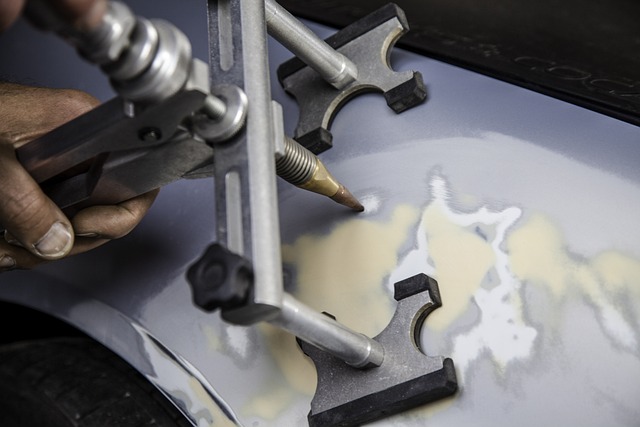Mercedes memory seat systems, celebrated for advanced technology and comfort, can develop issues over time due to faulty sensor connections, communication hiccups, or physical damage to wiring. Effective Mercedes massage seat repair demands specialized knowledge and tools to accurately diagnose problems like loose connections or incorrect sensor readings and perform necessary repairs or replacements. An automotive body shop with expertise in these repairs ensures optimal performance while preserving the vehicle's aesthetic through meticulous auto body painting. This involves a systematic process: visual inspection, advanced scanning for code errors, targeted identification of problematic sensors, replacement if needed, and thorough testing post-reassembly. For complex issues, consulting a professional mechanic is recommended to maintain vehicle safety and reliability.
Struggling with a faulty Mercedes massage seat? Understanding the intricate mechanics of these luxury vehicles is key to successful repairs. This comprehensive guide delves into the world of Mercedes memory seat systems, focusing on common issues related to sensor connections. By identifying and diagnosing the problem, you can embark on a DIY journey to repair your car’s comfort features. Our step-by-step process ensures you tackle sensor issues effectively, bringing your Mercedes massage seat back to its optimal state.
- Understanding Mercedes Memory Seat Systems and Common Issues
- Diagnosing Faulty Sensor Connections in Massage Seats
- Step-by-Step Guide to Repairing Mercedes Memory Seat Sensors
Understanding Mercedes Memory Seat Systems and Common Issues

Mercedes Memory Seat Systems are renowned for their comfort and advanced technology, featuring intricate mechanisms to ensure personalized seating settings for each occupant. These systems utilize a network of sensors and actuators that work in harmony to remember and replicate desired seat positions. However, over time, these components can develop issues, leading to faulty sensor connections and resulting in a loss of functionality. Common problems include intermittent communication between the control unit and sensors, incorrect readings from the pressure or temperature sensors, or physical damage to the wiring due to wear and tear or loose connections.
When it comes to Mercedes massage seat repair, addressing these common issues is essential for restoring optimal performance. An automotive body shop specializing in such repairs will have the expertise and tools to diagnose problems accurately. They may employ advanced diagnostic tools to scan the system’s computer network, identify faulty sensors or wiring, and then perform repairs or replacements accordingly, ensuring proper auto body painting if necessary to match the vehicle’s original aesthetics.
Diagnosing Faulty Sensor Connections in Massage Seats

Diagnosing faulty sensor connections in Mercedes massage seats involves a systematic approach to identify and rectify issues that prevent optimal performance. The first step is to visually inspect the seat for any visible damage, such as cracks or loose wires, which could indicate a broken connection. This initial check provides valuable insights into potential causes.
If no apparent physical damage is found, further investigation using diagnostic tools becomes necessary. Advanced scanning devices can identify code errors related to sensor malfunctions. By analyzing these codes, technicians can pinpoint the specific sensor causing problems, whether it’s related to seat adjustment, heat control, or massage functionality. This process effectively differentiates between issues in the electrical system, software, and physical components, enabling targeted Mercedes massage seat repair for a smoother and more comfortable ride.
Step-by-Step Guide to Repairing Mercedes Memory Seat Sensors

Repairing Mercedes memory seat sensors is a process that requires precision and an understanding of automotive systems. Below is a step-by-step guide for those looking to tackle this task, focusing on the core aspects of the repair.
1. Identify the Faulty Sensor: Start by locating the faulty sensor causing the issue with your Mercedes massage seat. This might involve tracing the electrical connections and using diagnostic tools to pinpoint the problem area.
2. Disconnect and Inspect: Once identified, carefully disconnect the sensor from its wiring harness. Remove any debris or corrosion from the connection points. Examine the sensor for damage or wear, ensuring it’s in good working condition before reassembly.
3. Replace the Sensor (if necessary): If the sensor is indeed faulty, replace it with a new one compatible with your Mercedes model. Ensure proper alignment and secure connections during installation.
4. Reassemble and Test: After replacing or cleaning the sensor, reattach it to the wiring harness and reassemble any components that were removed during the process. Test the seat functionality thoroughly to ensure the issue is resolved, confirming the successful completion of your Mercedes massage seat repair.
Remember, for complex cases or if you’re unsure, consulting a professional mechanic or automotive specialist can be beneficial, ensuring the safety and reliability of your vehicle’s interior systems, including car paint services or car bodywork repairs in severe cases.
Mercedes massage seat repairs, particularly focusing on sensor connections, are a key aspect of maintaining the comfort and functionality of these high-end vehicles. By understanding common issues like faulty sensors and following a structured guide for repairs, car owners can effectively address problems within their Mercedes memory seat systems. This do-it-yourself approach not only saves costs but also ensures your vehicle’s seating remains in top condition, enhancing the overall driving experience.














